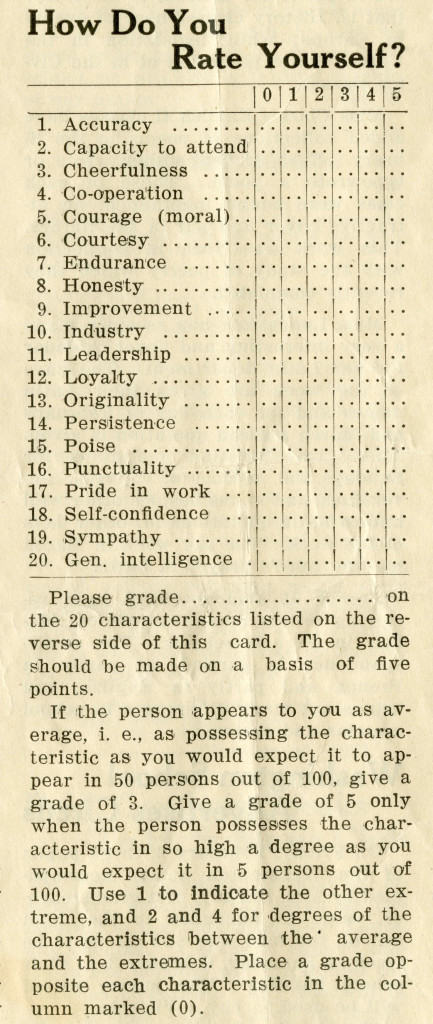May 28th through July 4th is Northfield History Month. Learn more about the events hosted this month here. To honor Northfield’s past and showcase the work of the Northfield History Collaborative, there will be new posts each week about the various projects that have been added to the Collaborative’s online collection.
To start off, we will first introduce our four new partners to the Collaborative: Christdala Swedish Lutheran Church, Three Links Care Center, First United Church of Christ, and the City of Dundas, and each of their roles in the history of Northfield.
First United Church of Christ:
Founded in 1856, the First United Church of Christ has the distinction of being the first church in Northfield. The congregation helped to found Carleton College in 1866, and counted many influential early Northfielders among its members. The content now available in the Collaborative from First UCC consists of three books of early records of the church, from 1856 to 1908. These records deal mainly with the administrative details of the church and membership.
The early records attest to commonly occurring changes in membership as settlers arrived in or left the area. Incoming members were expected to present letters of recommendation from their previous churches that testified to their Christian character. Likewise, anyone leaving First UCC also submitted a request for a recommendation letter to their new congregation. These requests were for the most part accepted and became everyday business for the church leaders. Therefore, in the unusual circumstance where such a request is denied, it stands out markedly from the day to day governance of the church.
One of these instances is recorded in the second record book when Mr. and Mrs. LH Kelley requested letters of dismissal and recommendation in 1870. Mrs. Kelley’s request was accepted but Mr. Kelley’s was not, the reasoning follows:
In reference to the request of Bro LH Kelley for a letter from this church, we cannot grant such a letter in view of the course which he has recently and to considerable length pursued, in publishing articles detrimental to the best interests of religion, detrimental to the best interests of the Church of which he is himself a member, and whose welfare he has solemnly promised to care for as well as to the highest interests of morality in the place. As a specimen of which we mention particularly the article signed ‘Anathema’ and published during the progress of a precious revival religion. We present these reasons distinctly to Bro Kelleys consideration, as complaints; which we as a church feel constrained to make, and to ask that he will if possible relieve our painful emotions by such explanation or confession as shall satisfy us that he no less than we regret the evil that has been done and that there shall be no future occasion for a like trouble.
A committee was formed to discuss the issue and come to a decision regarding the matter. Mr. Kelley responded to their concerns in the following letter, opening up the debate to broader ethical and philosophical questions concerning the responsibilities he felt as a Christian and his dedication to the liberty of the press:
June 6th 1870
To the Communicants of the 1st Congregational Church of Northfield Minn.
Your action of last Monday evening with regard to myself, has been communicated to me by Bro Spencer our church clerk. In the first place you accuse me (in the form of complaint) of publishing articles in the Northfield Enterprise, detrimental to the best interests of religion, detrimental to the best interests of the church and specified an instance the article signed ‘Anathema.’ I am very sorry that you consider yourselves injured by my publishing an article in which I had no part or lot in the matter. From my stand point I could view the subject in no other light than to allow it to be published, or be guilty of abridging the liberty of the press, which I could not do without doing violence to the great doctrines of universal Liberty. I feel that I made suitable apology at the time, for the article appearing in the Enterprise, and however distasteful it might appear to me at the time, I felt that I had no just and reasonable grounds to withhold it. And I have not the most distant idea that any such remarks has in the least degree injured the cause of Christ, or any denomination founded on his teachings, for I believe that the laws of Jehovah and the fundamental principles established by Christ on earth can never be abrogated by mortal man, how much so ever, he may labor for that object…
…Brethren, in all my transaction in publishing an independant [sic] journal in Northfield, I may, and no doubt have committed errors, for perfection cannot be found on Earth, yet I assure you that my conscience does not condemn me, and I feel to day as I have in the past the same desire to love my God and your God, and all those who are the meek and lowly followers of the teachings of our blessed Lord.
Several committees were formed to discuss the matter over the ensuing months, but their ultimate decision is not recorded within the church records.
Click here to view the online collection for the First United Church of Christ.

The parish house and the “Old Brown Church,” circa 1870.

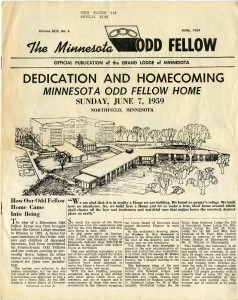
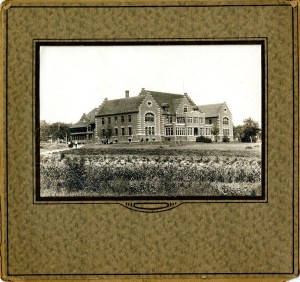
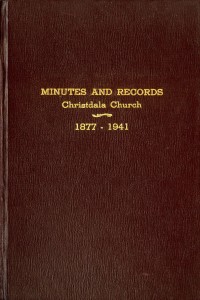
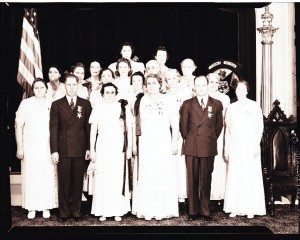
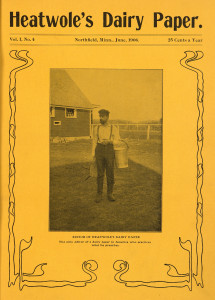

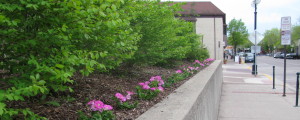 Did you know May 30 – July 4 is the first-ever Northfield History Month? Learn more about the events
Did you know May 30 – July 4 is the first-ever Northfield History Month? Learn more about the events  Did you know May 30 – July 4 is the first-ever Northfield History Month? Learn more about the events
Did you know May 30 – July 4 is the first-ever Northfield History Month? Learn more about the events 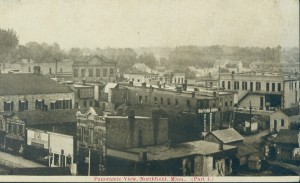 Did you know May 30 – July 4 is the first-ever Northfield History Month? Learn more about the events
Did you know May 30 – July 4 is the first-ever Northfield History Month? Learn more about the events 